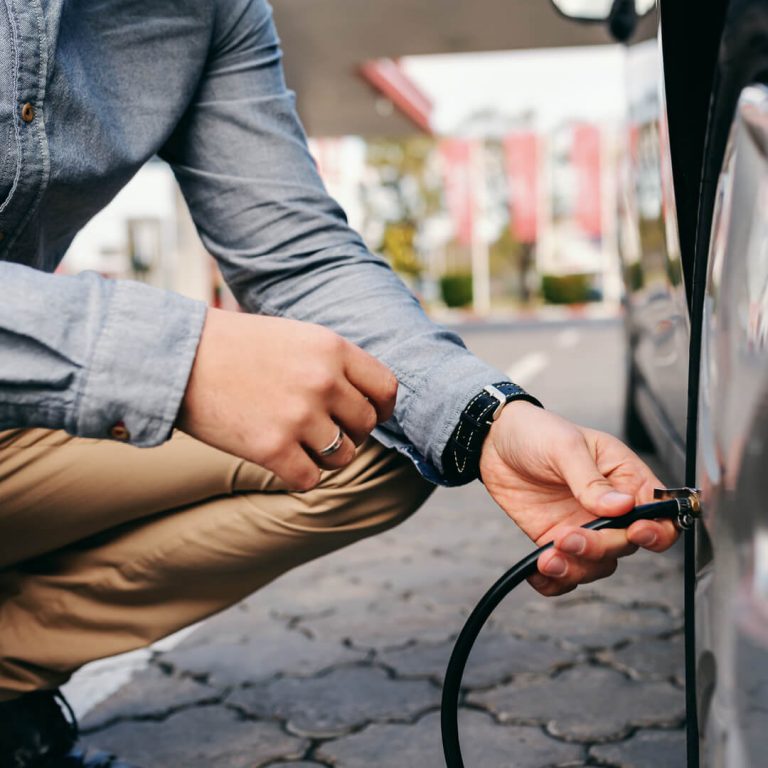AAA says that the average annual cost of owning a car hit a new high in 2020 at $9,561, which includes nine cents per mile for maintenance, repairs and tires. That means if you put 10,000 miles a year on your car, you can expect to pay about $900 in maintenance and repair bills. Double that expectation to $1,800 if you drive your car 20,000 miles per year.
Keeping your car in tip-top shape is the key to maintaining its value and limiting its time in the mechanic’s bay, where CarMD says the average car repair bill runs a little more than $375. Plus, routinely performing some simple and inexpensive DIY car maintenance helps you avoid other costly expenses.
1. Let Your Headlights Shine.
Driving around with burned-out or dimmed low or high beams can cost you in multiple ways. First of all, it can make it difficult for you to see the road causing you to have a car accident with another vehicle or object, which can impact your auto insurance premium and hurt your car’s resale value.
In addition, you can get a traffic ticket for driving without a working headlight, which isn’t just required at night in many places. In some states, your headlights must be on any time your windshield wipers are on, and other states require it during any adverse road conditions.
To avoid these dangers, routinely check your headlights to make sure they are in good working order. If not, you can change them out yourself by referencing your owner’s manual or by watching self-help videos like these from O’Reilly Auto Parts and AutoZone. And don’t forget to do the same for your taillights. O’Reilly and AutoZone also have DIY videos for replacing those bulbs.
2. Ditch Worn Wiper Blades.
Another vehicle hazard that can cause an accident is driving with worn-out windshield wiper blades. Not only is their squeak highly annoying, but they also make it hard to see the road when it’s precipitating. An accident’s aftermath can mean paying your auto insurance deductible, potentially being hit with a higher premium when your policy renews and seeing further depreciation of your car’s resale value.
To avoid all of that, replace your wiper blades about every six to 12 months. Your owner’s manual will indicate the kind you need, and DIY videos like these from Edmunds and Home Depot show you how to swap them out.
3. Keep Tires Properly Inflated.
According to Car and Driver, the costs of not paying attention to your tires’ air pressure really add up and include:
- Risking a blowout, which is the highest when low tire pressure combines with high speed
- Wearing out your tires before their life expectancy
- Hurting your gas mileage because your car’s engine has to work harder
- Affecting how your car handles, putting you at greater risk for an accident
The National Highway Traffic Safety Administration’s TireWise: Life of a Tire video offers these tips for proper tire inflation:
- Check your tire pressure once a month using a tire gauge.
- Don’t ignore the Tire Pressure Monitoring system that’s available on newer cars.
- Find your recommended tire pressure number on your door edge, glove box, trunk lid or in your owner’s manual.
4. Check Fluid Levels.
In addition to gasoline, there are several other fluids that your vehicle needs to run smoothly, efficiently and safely. So, it’s a good idea to keep a frequent eye on the following:
- Brake fluid
- Coolant
- Engine oil
- Power steering fluid
- Transmission fluid
- Windshield washer fluid
Engine oil and windshield washer fluid are the easiest to check and refill on your own, and your effort will be worth it. After all, your car’s engine can be irreparably damaged if it doesn’t have oil, and your newly replaced wiper blades need fluid to keep your windshield clean of dirt and debris that make it difficult to see the road.
As for the other fluids, both Popular Mechanics and AAA offer tips for checking and refilling them yourself. But if you’re not comfortable doing that, just make sure it’s a part of your oil change service.
5. Change the Air Filter.
You’re probably used to regularly changing the air filters in your home to improve its air quality and increase its energy efficiency. But guess what? Your car engine’s air filter needs the same attention for similar reasons. Champion® explains the price of not changing it:
- Damages engine parts from accumulated dirt and debris
- Lowers your miles to the gallon
- Triggers your Check Engine light
Shoot for changing your air filter once a year or every 12,000 to 15,000 miles, whichever comes first.
6. Tidy Up Around the Engine.
Last tip for keeping your car running smoother for longer: Keep under the hood clean by vacuuming or sweeping dirt away from the engine every so often.
Editor’s note: Quorum is not affiliated with any of the companies mentioned in this article and derives no benefit from these businesses for placement in this article.





your car, you can expect to pay about $900 in maintenance and repair bills. Double that expectation to $1,800 if you drive your car 20,000 miles per year.